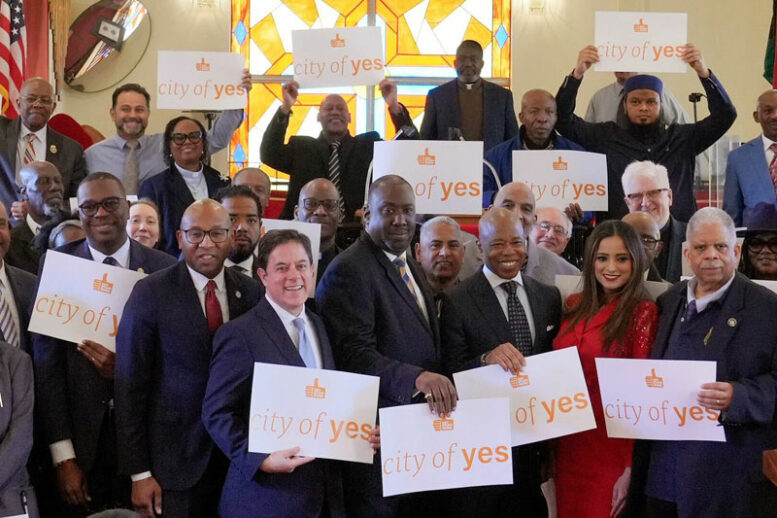New York City Mayor Eric Adams recently unveiled a zoning proposal to enable faith-based organizations and other mission-driven nonprofits to construct affordable housing in New York City. The plan, which is part of the “City of Yes for Housing Opportunity” initiative, seeks to address the city’s housing crisis by making it easier to build new homes in every neighborhood.
Under the proposal, a number of outdated zoning laws would be lifted, allowing faith-based organizations to convert their underutilized properties, such as old convents and school buildings, into affordable housing units. It comes at a time when New York City is grappling with a 1.4 percent rental vacancy rate.
The broader initiative will soon undergo public review and is expected to be voted on by the New York City Council by year’s end.
“To tackle New York’s affordable housing crisis, we need to use all the tools in our toolkit,” said New York state senator Andrew Gounardes. “By enabling religious institutions to develop affordable housing, we’re empowering them to serve New York’s most vulnerable while ensuring their own financial stability, too. This proposal by Mayor Adams complements my own statewide Faith-Based Affordable Housing Act, and I’m grateful for his administration’s efforts to ensure all New Yorkers have an affordable place to live.”
Subscribe to YIMBY’s daily e-mail
Follow YIMBYgram for real-time photo updates
Like YIMBY on Facebook
Follow YIMBY’s Twitter for the latest in YIMBYnews


Good idea however allow construction of middle and low income towers in between the avenues on the Upper East Side. Right now it is in the Avenue. Can buy twenty to thirty five store buildings and build huge number of units . Right now high risers only allowed on Avenue.
High rises are permitted on the wide crosstown streets, such as 72nd and 79th, and 86th. They are not permitted on the narrow streets for good reason – they would obstruct access to light and air at street level.
Allow housing to be built anywhere.
Keep dreaming. Affordable housing is a joke.
New York City has been one of the most expensive cities in the world for the past several decades. Why don’t they build it somewhere else instead of reducing the supply of market-rate housing in NYC? This is equivalent to giving Iphone 15 or BMV to homeless people instead of giving them Nokia or Toyota
This is another opportunity for developers to land grab. It will pay off campaign debts and benefit no one else. Where is the separation of church and state? Churches are a business just like any other capitalist entity so there will be no benefit to the average NYC resident in search of an “affordable” place to live. This is a city of greedy developers and politicians who could care less about lower income people.
This proposal can not be a one size fits all for NYC each Boro/community has its own unique character Developers win the communities are at stake our land mark will be compromised according to what I heard during this in person meeting I attended
This bill proposes over development in communities that are not structured to accommodate the type of construction parking flooding and many other concerns must be addressed. SEQueens has 1 hospital how will you address this very important concern
I digress for now
Another suggestion is to allow some basements be
converted to residential apartments of course with dob approved plans/codes.
Really is that safe? I’ve lived in basements n they r never safe
NYC lost 500k population from 2020 to 2023. Are there 200k newly empty housing units?
As an architect who specialized in affordable/supportive housing for over 40 years – I will tell you this is not a new idea. Some of the first projects I ever worked on were conversions of convents into SRO housing and Catholic schools into affordable apartments. It only took some creative understanding of the zoning resolution.